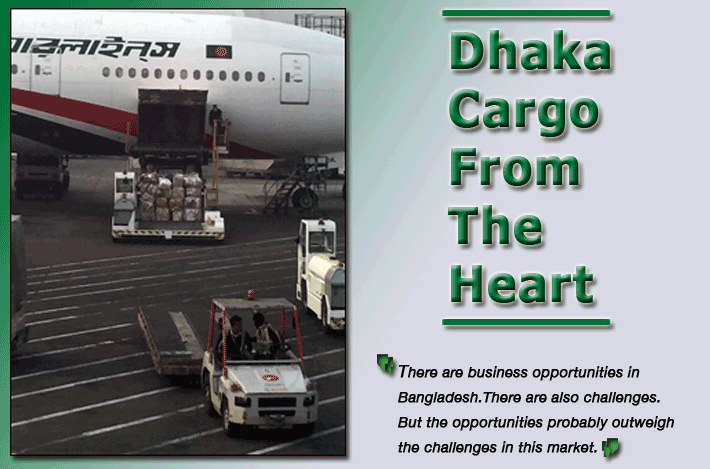
Greetings from Dhaka, where loose cargo
rides in a styale that harkens back to a free-form era in our industry.
I spent some time looking at the cargo area
and consignments on the hardstand at Hazrat Shahjalal International Airport.
DAC Cargo today is action central, with consignments piled
high and strewn out all over the place, spilling out of the sheds, and awaiting
transport.
Cargo operations at Dhaka feature thousands
of people moving goods and even guys on bicycles riding around and directing
the action.
The scene brings back sweet, fond memories,
but also the realization that there are places where cargo-minded people are
still building our great industry from the ground up.
As eager and busy people move at a frenetic
pace, weaving in and out of repurposed airport buildings that find use,
once more, for cargo, former front-line aircraft—now converted to carry
freight—stand close by, faithfully awaiting one more push-back.
You see all these indicators and tons of
cargo and know Dhaka is preparing and hopeful for greatness.
For a moment, as we taxied
by in a modern A330, I thought we were in HG Wells' Time Machine, and that we might jump down on that ramp and start pumping traffic alongside
the others.
Later thinking of it, the spirit and excitement
was, in a word, energizing.
In Bangladesh, long before anybody else
in the world had dreamed of a Southwest Airlines or JetBlue low-cost budget
air service, transportation pioneers at work for PIA in 1954 launched
a "No Frills" DC-3 low-cost airline to serve destinations throughout
the region and ran it for years at a loss to build the airline business in the area.
They also utilized 14 passenger S61 Sikorsky
twin engine helicopters to connect city destinations that had no service
or airports. These regions were landlocked, with many rivers to cross to move goods
and people between the main ocean port at Chittagong and other cities including
Sylhet, Comilla, and Ishurdi.
The fresh fruits in Dhaka are lovely, flavorful,
and beyond compare.
Motor vehicle traffic in Dhaka is a combination
demolition derby, a dense overland ballet.
 Traffic can be so impenetrable that on some
roads, trucks only come out to play at night. Traffic can be so impenetrable that on some
roads, trucks only come out to play at night.
But no one can deny the energy and dynamism
of Bangladesh, the excitement today and the potential as tomorrow
looms large on the screen.
“There are business opportunities
in Bangladesh,” Abrar A Anwar, chief executive officer of Standard
Chartered Bank recently told a reporter for the Dhaka Daily Star.
“There are also challenges.
“But the opportunities probably outweigh
the challenges in this market.
“That's why we are here and we are
investing,” he said.
Bemoan Biman
Despite the hope and promise, in 2018, the
country’s flag carrier—Biman Bangladesh Airlines—continues to operate
under an air cargo ban that has been in place since March 8, 2017.
Today the EU, which represents the market
where more than 54 percent of Bangladesh's exports of apparel and vegetables
end up, has declared Dhaka Gateway Hazrat Shahjalal International Airport
a 'red zone' due to insufficient safety and security measures. UK, Australia,
and Germany have also instituted the same ban.
So with cargo off the table for Biman’s
four weekly flights DAC/LHR, EU-bound cargo airlines from Bangladesh have
to rescreen goods in a third country.
For the record, the ban to London, which
is Biman’s only U.K. gateway, was supposed to have been lifted last
December, but has been extended indefinitely.
In fiscal 2016-17, Biman earned Tk 244 crore
from its cargo business in contrast to Tk 315 crore a year earlier.
The state-run carrier transported 33,542 tons of cargo last fiscal year,
down 18 percent YoY.
Geoffrey

|





